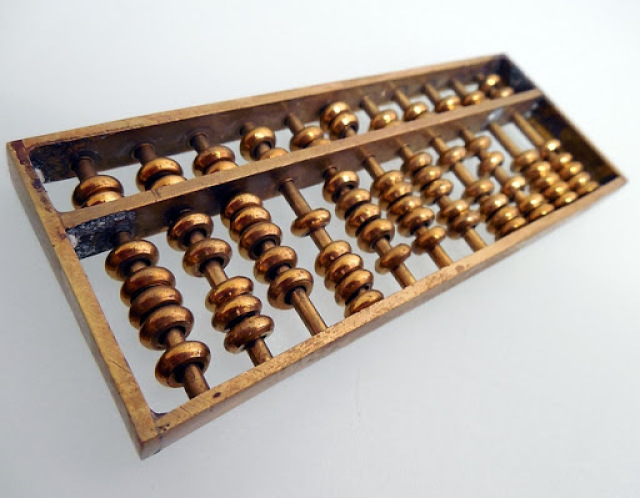The abacus (plural abaci or abacuses), also called a counting frame, is a calculating tool that has been in use since ancient times and is still in use today. The exact origin of the abacus is unknown. The abacus essentially consists of a number of rows of movable beads or other objects, which represent digits.
In earliest use the rows of beads could be loose on a flat surface, or sliding in grooves. Later the beads were made to slide on rods of some sort built into a frame, allowing faster manipulation. Abacuses are still made, often as a bamboo frame with beads sliding on wires.
There are distinctive modern implementations of the abacus. For any particular abacus design, there are usually numerous different methods to perform calculations, which may include the four basic operations, and also square and cube roots.
Although calculators and computers are usually used instead of abacuses today, abacuses are still used in some countries. Merchants, traders and clerks in some parts of Eastern Europe, Russia, China and Africa use abacuses, and they are still used to teach arithmetic to children. Some people who are unable to use a calculator because of visual impairment may use an abacus.

